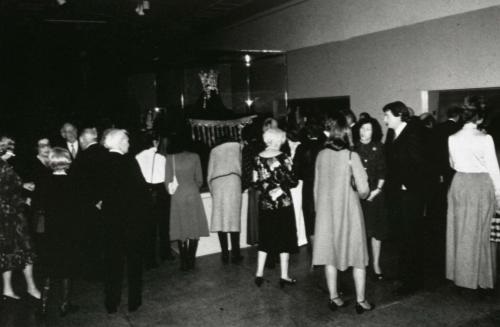
5000 Years of Korean Art in Smithsonian National Museum of Natural History, Washington D.C, USA, September 30, 1981, Korea TV Collection
5000 Years of Korean Art
* Source: MMCA
Related
-
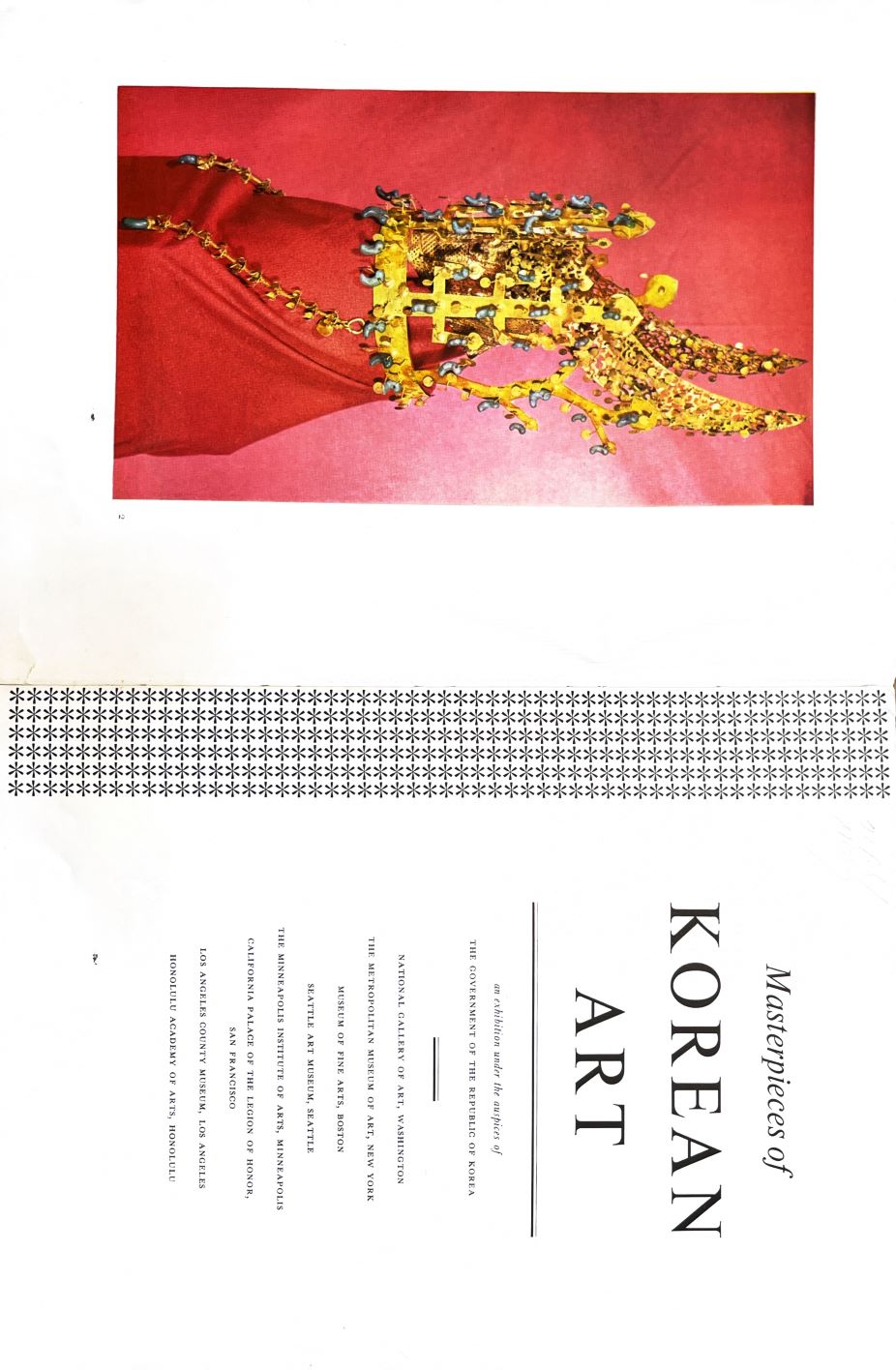
Masterpieces of Korean Art
Masterpieces of Korean Art was the first overseas exhibition of Korean art organized by the National Museum in eight U.S. cities from December 15, 1957 through June 7, 1959 in an effort to rebuild the reputation of the country ruined after the Korean War and promote its cultural heritage abroad. Curated by Kim Chaewon, then director of the National Museum of Korea, preparations for the exhibition began to be made in 1956. The large-scale exhibition traveled to Washington, D.C., New York, Boston, Seattle, Minneapolis, San Francisco, Los Angeles, and Honolulu. For the exhibition, Alan Priest, the head of the East Asian Department of The Metropolitan Museum of Art, and Robert Paine, the curator of the Museum of Fine Arts, Boston, visited South Korea. On the Korean side, Ko Huidong, Bae Ryeom, Son Jaehyeong, Lee Byeongdo, Jeon Hyeongpil, Choi Sunu, Hong Jongin, and others were commissioned to select items to be displayed. However, it was regrettable that the opinions of Priest and Paine were unilaterally carried out in the process. Some 198 items, including sculptures, paintings, ceramics, and metalwork objects were selected at this first large-scale overseas exhibition of national cultural treasures. The exhibition was held in consecutive order through 1959 at the National Gallery of Art in Washington, D.C., The Metropolitan Museum of Art in New York, Museum of Fine Arts, Boston, Seattle Art Museum, Minneapolis Institute of Art, California Palace of the Legion of Honor in San Francisco, Los Angeles County Museum of Art, and Honolulu Museum of Art. Pertinent exhibition catalogues were published as well. Masterpieces of Korean Art sparked great interest in another overseas exhibition The National Art Treasure of Korea held in March 1961 at the Victoria and Albert Museum in London, England. It traveled across European countries, including the Hague in Netherlands, France, Germany, and Austria until the end of June 1962.
-
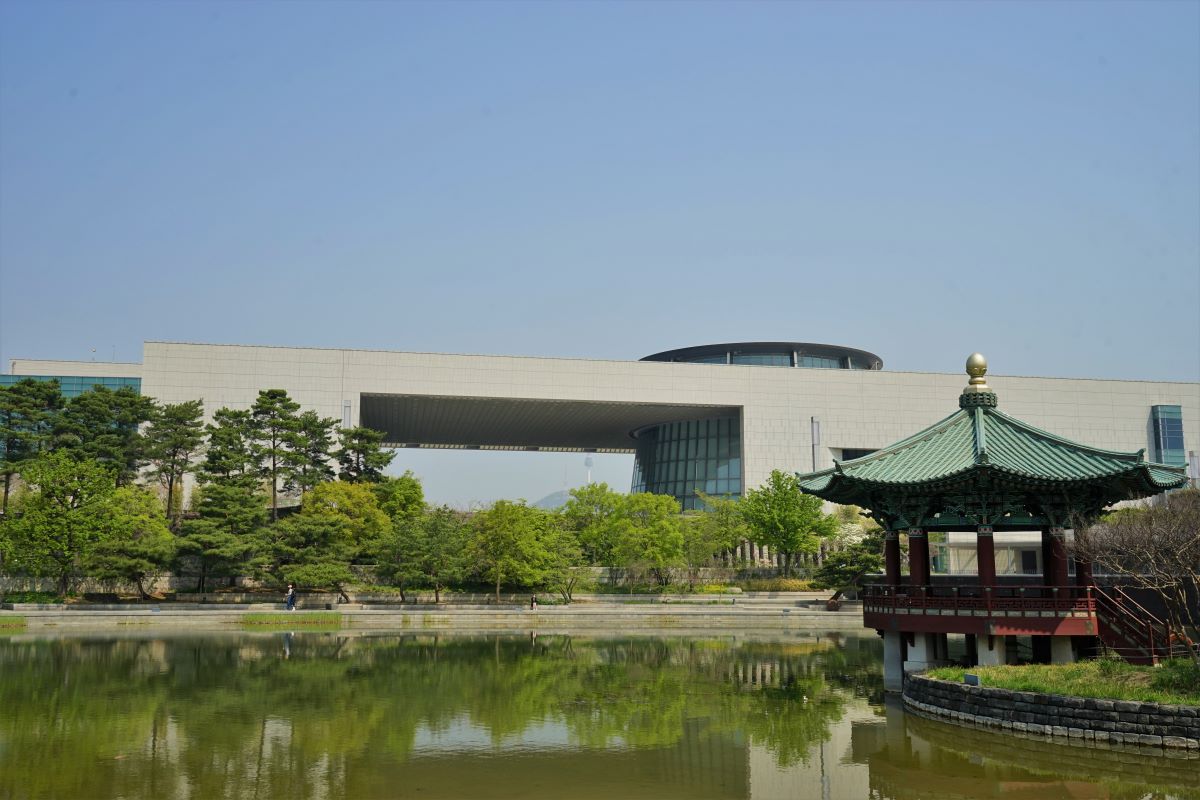
National Museum of Korea
The National Museum of Korea is located at 137 Seobinggo-ro, Yongsan-gu, Seoul. The predecessor to the National Museum is the Yi Royal Family Museum founded in September 1908. The Yi Royal Family Museum showcased artwork owned by the royal family of Korea and was opened to the public in November 1909. The museum was relocated from its original home in the Japanese Government-General of Korea building to Gyeongbokgung Palace in 1910 and renamed the Japanese Government-General of Korea Museum in December 1915. The Japanese Government-General of Korea Museum collected and exhibited excavated artefacts and donated items from temples while conducting historical and archaeological research and archiving. The National Museum of Korea was established following the acquisition of the Japanese General-Government Museum in December 1945. In 1969, the National Museum of Korea merged with the Deoksugung Museum, the successor of the Yi Royal Family Museum. In October 2005, the National Museum of Korea moved to a newly constructed building at its current location in Seoul. As of December 31st, 2018, the museum holds a collection of approximately 410,000 pieces that span from the prehistoric to the modern era, and includes works from China, Japan, and Central Asia.
Find More
-
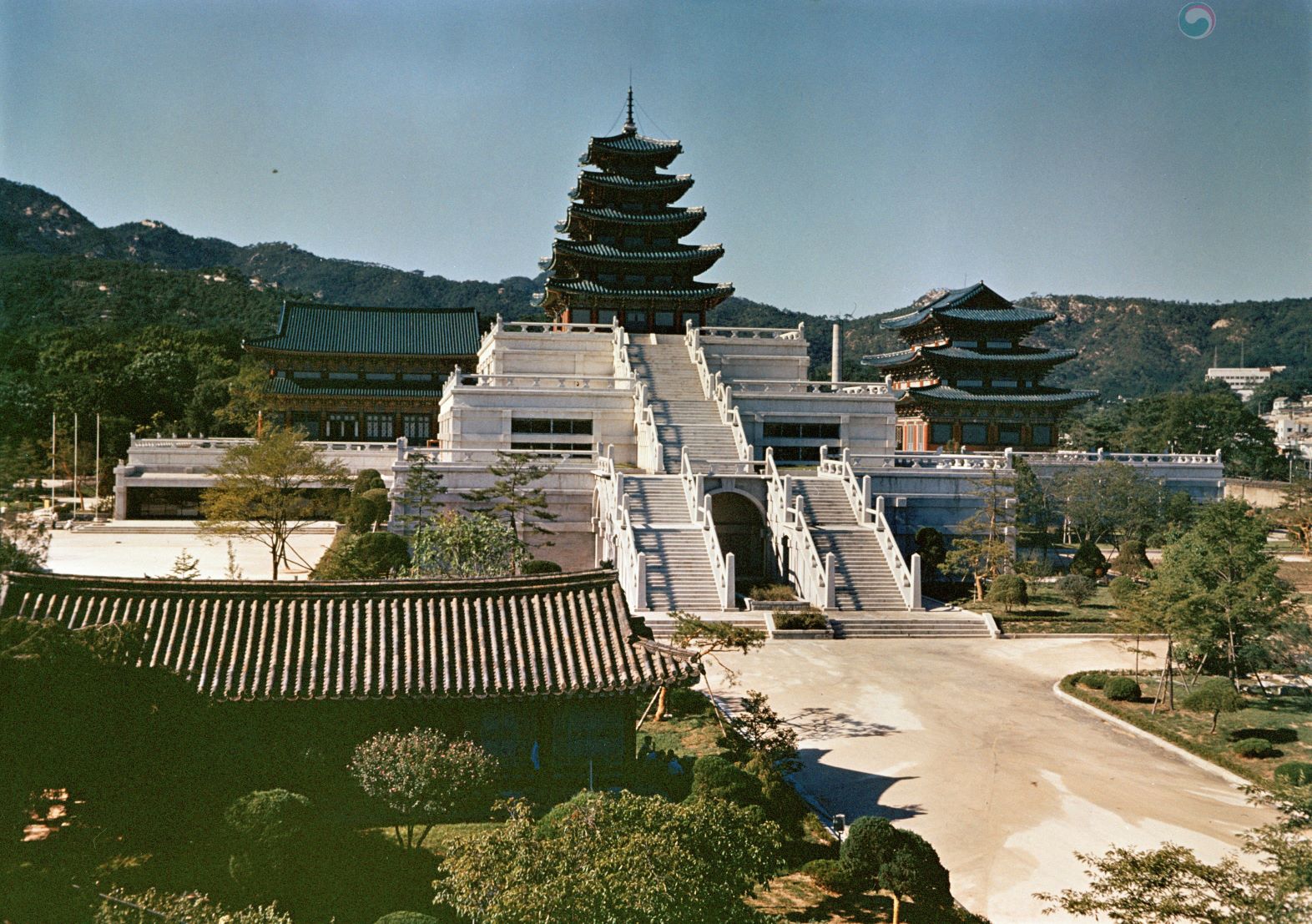
National Museum
The National Museum was established by the Korean government in 1945 after Independence. It consists of a general museum and a special museum. The National Museum of Korea as a general museum took over the Museum of the Japanese Government-General of Korea and opened at Gyeongbokgung Palace in 1945. It annexed the Gyeongju, Buyeo, Gongju, and Kaesong museums. It also annexed Song Seokha’s National Museum of Anthropology and accepted the collection of Deoksugung Museum of Art (former Yi Royal Family Museum) in 1969. The museum was called “National Museum” from 1945 to 1972, and the “National Museum, of Korea” after the reorganization in 1972. Meanwhile, local annex museums were upgraded to local national museums, such as Gyeongju National Museum and Buyeo National Museum. Since Independence, national museums have been constructed in many local cities, including Gyeongju, Buyeo, Gongju, Gwangju, Jinju, Cheongju, Jeonju, Daegu, Gimhae, Jeju, Chuncheon, Naju, and Iksan. These museums play pivotal roles in maintaining local histories and cultures. Special museums within the National Museum of Korea include the National Palace Museum (the history and culture of the Joseon Dynasty), the Maritime Museum (maritime culture), the Forest Museum, the Diplomatic Museum, the Police Museum, the Custom Museum, the Lighthouse Museum, the Postal Museum, and the Museum of Korean Traditional Music.
-
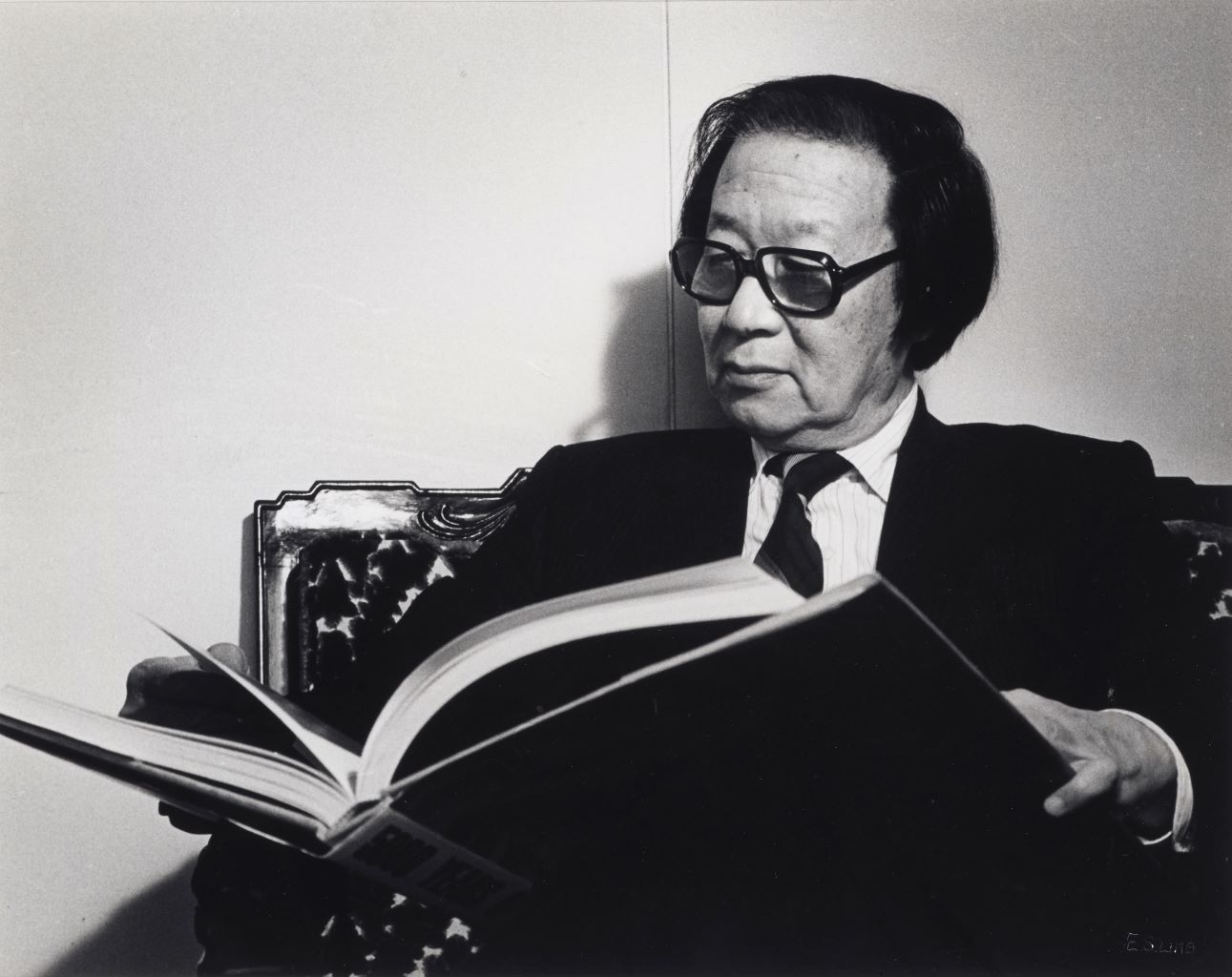
Choi Sunu
Choi Sunu (1916-1984, pen name Hyegok) was an art historian who served as the fourth director of the National Museum. After graduating from Songdo High School in Kaesong in 1936, he worked as a clerk in the Archaeology Department of the Gaepung County Office and studied art history by exploring historical sites with Ko Yuseop. He began working at the Kaesong Provincial Museum in 1946 and was transferred to the National Museum in 1949. When the Korean War broke out, he was tasked with transporting the National Museum’s collection to Busan. He met Jeon Hyeong-pil (pen name: Kansong) when he covered up an attempt to relocate Jeon’s Bohwagak collection in Seongbuk-dong to North Korea, and the two became close friends. Both his pen name “Soonwoo” and his pen name “Hyegok” were given by Jeon Hyeong-pil. Choi later served as the supply department head, curator, and director of the National Museum, leading research and exhibitions on Korean cultural heritage. From the late 1950s, he was in charge of Masterpieces of Korean Art, a traveling exhibition that toured the U.S. and Europe (1957–1959) and curated 2,000 Years of Korean Arts (1973) and 5,000 Years of Korean Art (in Japan in 1976, the U.S. from 1979 to 1981, and in Europe in 1984) to promote abroad the excellence of Korean culture. He was also interested in contemporary art and interacted with contemporary artists, including Kim Whanki, Kim Swoogeun, Chang Ucchin, Kim Kichang, and others. In 1956, he established Art Critics Association along with Kim Youngjoo, Lee Kyungsung, Kim Chung-up, Han Mook, and Chung Kyu. He lectured at Hongik University and Ewha Womans University and in 1981 received an honorary degree of Doctor of Literature from Hongik University. He served as the first president (1965–1966) of the Korean Art Critics Association (Hanguk misul pyeongnonga hyeophoe), a member of the Cultural Heritage Commission, and president of the Art History Association of Korea. Focusing on research on the history of Korean crafts and Korean painting, Choi wrote several publications, including Hoehwa (Painting, 1973), Mokchil gongye (Wood lacquering crafts, 1974), Goryeo doja (Goryeo ceramics, 1975), Hanguk hoehwa (Korean painting 1-3, 1975), Hanguk hoehwa (Korean painting 1-3, 1982), Hanguk cheongja doyoji (Kilns of Korean celadon, 1982), Cheongja – Togi (Celadon and earthenware, 1983). His posthumous works include Choesunu jeonjip (Collected works by Choi Sunu, 1996), Muryangsujeon baeheullim gidunge gidaeseoseo (Leaning against an entasis column of Muryangsujeon hall, 1994), and Naneun naegeosi areumdapda (I think mine is beautiful, 2002).






